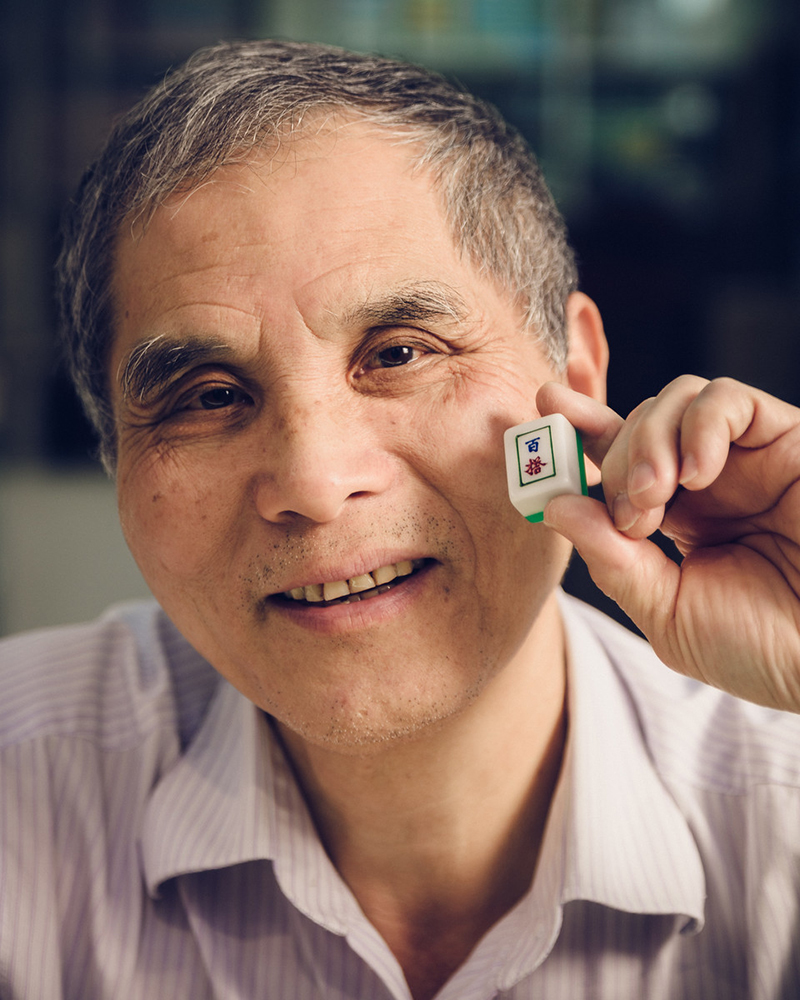HONG KONG – Hong Kong is a truly unique city, with a curious mix of modernity and tradition. While it always keeps pace with the latest in technology, finance, convenience and healthcare, it has not lost its charm when it comes to food, craftsmanship and culture. Whether you’re a born and bred Hong Kong local, a visiting tourist or an expat who’s made the city your home, there are some customs that will always find a place in your heart.

Lindsay Varty is a writer, journalist and rugby player. Half Macanese and half British by birth, but 100% Hong Kong local by heart, she has written a book called “Sunset Survivors” about ‘the trades and craftsmen of the real Hong Kong’. For her, the true taste of Hong Kong lies in visiting a dai pai dong.
“These iconic eateries are typically set up in alleyways and outdoor spaces with a tarpaulin overhead and simple set up below. They serve all sorts of Hong Kong classic dishes; from HK style French toast to an amazing tomato macaroni broth.”
Lindsay, who has travelled the world, believes that the food and the no-frills set up are what make them so special and different from stalls you may find in other parts of the world.
“I suggest everyone should try a dai pai dong! My pick for anyone visiting the city – a visit to Sing Heung Yuen dai pai dong in Central is a must as the food and service is great, the owner Irene Lee is my friend!”
Irene Lee (L) and Raymond Lam (R); Image credit: Gary Jones for Sunset Survivors
Staying with food and Hong Kong delicacies, Lindsay admits that she is a huge fan of dim sum (who isn’t?). Dim sum is often made in bamboo steamers, but this process is becoming increasingly mechanical – often made by factories in China. To watch a unique local art form, drop by Tuck Chong Sum Kee Bamboo Steamer Company in Sai Ying Pun. Watching the craftsman at work through the little window at the shop is a privilege and you’re sure to be tempted to pick up a steamer or two yourself! Lindsay explains why.
“Master Raymond Lam has been working in his family business for over 40 years! He is the fifth generation owner of his business and works all day every day making steamers for hotels, restaurants, shops and homes all around Hong Kong and internationally as well.”
Lindsay observes that as handcrafted bamboo steamers are being increasingly seen as an art form, bamboo steamers are now being used as candle holders, lamps, storage containers and wall decorations.
She adds, “ It’s great to see them being used for any purpose as it builds awareness for their beauty and for Hong Kong culture, but ultimately I think their main use is still for steaming food- and Hong Kong locals do plenty of that to keep the industry alive!”
Talking about machines replacing the human touch, it’s also very visible when it comes to the making of mahjong tiles. Mahjong playing is very popular in Hong Kong, with some locals playing all weekend. However, nowadays cheaper, plastic mahjong tiles are replacing the traditional hand painted ones.

“Painting them takes a long time and a lot of effort and the handmade sets can cost about HK$4,000 (approximately US$515). One of the few remaining traditional mahjong artists Master Cheung Shun-king, or ‘Uncle King’ as he is more commonly known, works in Biu Kee Mahjong in Jordan. He still hand makes entire mahjong sets and hand paints and engraves the tiles himself using a traditional method that has been passed down generations in his family. Interestingly, Master King doesn’t even know how to play mahjong himself – he said he stares at the tiles all day so doesn’t want to look at them when he finally goes home!”
Want to see what it takes to hand paint mahjong tiles? Try one of the workshops in the city as this art form is seeing a revival of sorts. Get in touch with Uncle King or Karen Aruba, and make your own special connection with Hong Kong’s rich culture and history.
While Lindsay has grown up in this city, author and illustrator Christine Cappio came here from France to follow her heart. Her book “Gweimui’s Hong Kong Story” follows the journey of a young French woman discovering the city’s wet markets, colourful decorations and amazing cuisine. While she insists she is not a foodie (she is a ceramic designer by profession), she couldn’t help falling in love with the many food customs in the city.

“I loved learning about the Hong Kong food culture and using local ingredients. One of the specialties that I like making is wife cake or lou po beng.”
The legend about this cake is of a wife who sold herself as a slave to help her family. To win her back, her husband started selling small pies with candied watermelon and almond, eventually earning enough to buy her back. Naturally, you can imagine how delicious this flaky and light pastry is! You can buy the traditional Cantonese pastry at Hong Kong-style bakeries and enjoy it as a teatime snack.
Christine has another favourite: “A few years ago I learnt to make Tea Cake. This is one of the Hakka’s (or “guest family”) specialties. The Hakka have long settled in Southern China and their food culture is present in Hong Kong. The small glutinous rice dumplings are stuffed with either a savoury or a sweet filling, and steamed on a banana leaf. Each dumpling is decorated with a peanut or red bean on top.”
Tea cakes are usually pre-cooked and eaten during Ching Ming Festival (Tomb-Sweeping Day) or Chung Yeung festival (Double Ninth Festival). Hakka tea cake is not as common as wife cake, but you can find them at dessert shops in Tai O or the Cooked Food Centre in Tai Po Hui Market.
Quite naturally, Hong Kong will always be associated with seafood. And a standard ingredient in many dishes from fried rice to stir fried veggies is the well-loved shrimp sauce. Once common in Hong Kong, making of shrimp sauce is now on the decline after trawling was outlawed in 2013 to protect precious marine resources. The trade of shrimp sauce making has been recognised as an intangible asset and added to the Hong Kong cultural heritage list in 2014.
“Today there are a few remaining local producers whose products are fully made in Hong Kong and prepared with local krill. The Sing Lee Shrimp Sauce & Paste Manufacturer is one of them. The family-run business that started more than 80 years ago is located in Tai O, the former fishing village well known for its stilts houses and sometimes called the Little Venice of Hong Kong.”
If you happen to visit Tai O between June and October, you will see blue buckets filled with thick shrimp sauce, as well as large rattan trays filled with pink paste and pink bricks drying in the sun. The fish aroma is powerful and you can’t miss the place!”
If you are visiting Tai O, make sure you pick up shrimp sauce (sold in glass jars) and shrimp paste (in bricks sealed in plastic film) right from Sing Lee’s in Tai O and other brands at traditional grocery stores in town.
For a ceramic designer like Christine, Hong Kong is a place of wonder, with many beautiful porcelain pieces on display in shops.
“I love Hong Kong painted porcelain, also called Guangcai. Before the 60s there were 4 large hand-painted porcelain manufacturers in Hong Kong. Today, Yuet Tung China Works is the only one left.”
Hand-painted porcelain (L) and Joseph Tso (R); Image credit: Christine Cappio
Yuet Tung China Works was established in Hong Kong in 1928 by the Tso family who came from Guangzhou. Today the factory is run by the third generation descendant Joseph Tso. Since the 1960s, the porcelain wares have been decorated by hand (no more hand-painted) using rubber stamping and decals. Yuet Tung has served clients such as the Vatican, royal families and government officials of foreign countries and continues to make bespoke pieces for famous hotels, corporates, and individuals from all over the world today.
Christine explains the uniqueness and value of this art.
“Guangcai is a traditional craftsmanship and one of Hong Kong intangible heritages. The shop is full of excess stock (Guangcai and modern styles), and if you take time to explore among the huge piles of china wares, you will certainly discover something you like, such as a Guangcai hand-painted piece by Joseph Tso’s grand-father! You can also make a unique and personalised gift with a custom made design on a plate or another china piece. I would love to have one of my designs on a plate!”
Want to try this for yourself? Today, many people like porcelain painting as a hobby and porcelain painting workshops are on the rise in Hong Kong. Joseph Tso’s wife runs porcelain painting workshops at different venues in Hong Kong (group or private lessons).
















